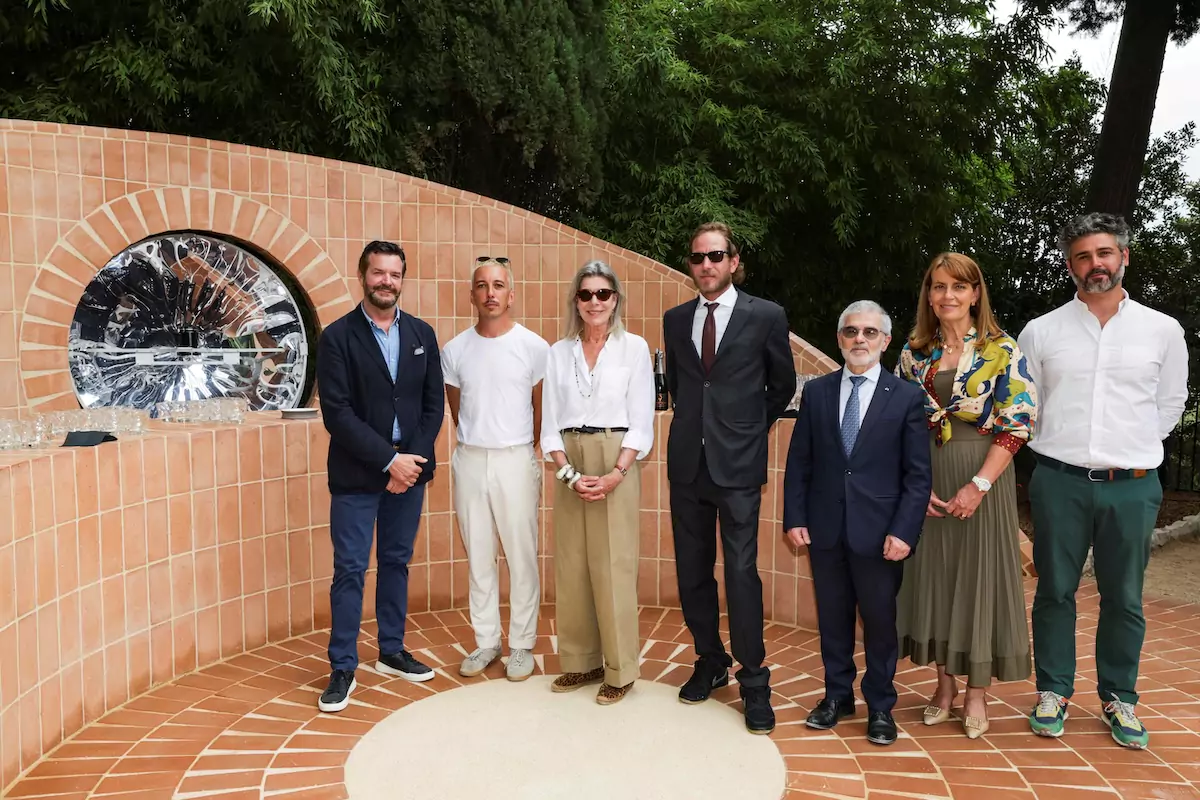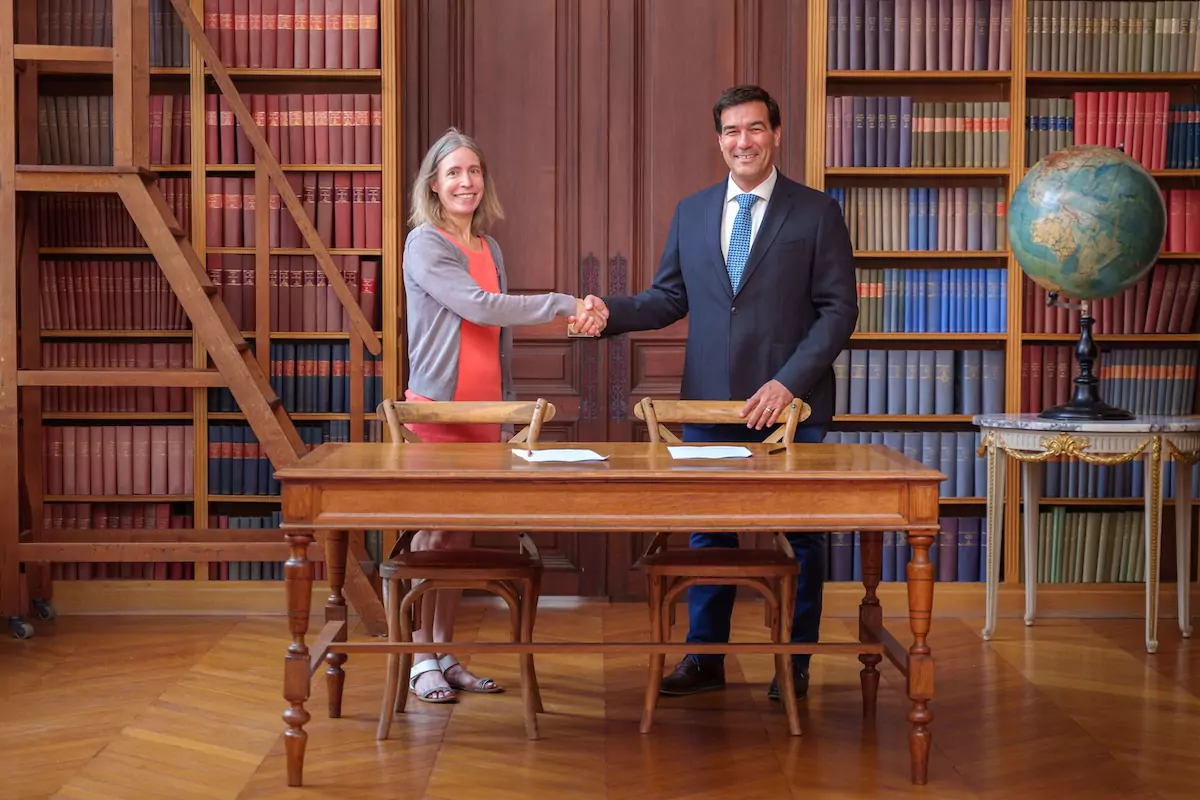Princess Caroline of Hanover has inaugurated ‘Régulus’, an architectural sculpture created by Guillaume Aubry, in the garden of Villa Paloma.
The installation, inspired by the antique garden of Villa Paloma designed by landscape architect Octave Godard, is oriented to follow the sun throughout the day. This heliotropic pavilion captures solar energy to heat and cook refreshments offered on-site.
Régulus is not just a museum café or a cocktail bar but a multifunctional space that integrates elements of all these functions. The structure, built from solid bricks in a geometric pattern, includes a central solar oven and a counter.
Guillaume Aubry, co-founder of the architectural agency Freaks, is an accomplished artist and researcher. A graduate of the École nationale supérieure d’architecture de Paris – La Villette, the University of Tokyo, and the Beaux-Arts de Paris, Aubry has extensively studied the theme of the sun. He currently teaches spatial design at the École des arts décoratifs de Paris and has previously conducted a school residency in Monaco.
Inauguration event
The opening event for Régulus on 4th July featured a discussion between Aubry and project curator Benjamin Laugier, food and sunset cocktails from the Valentin truck, and a performed projection of the 1950 film “Sunset Boulevard.”
Monaco Life is produced by real multi-media journalists writing original content. See more in our free newsletter, follow our Podcasts on Spotify, and check us out on Threads, Facebook, Instagram, LinkedIn and Tik Tok.
Photo: Around H.S.H. Princess Caroline of Hanover (from left to right): Björn Dahlström, Director of NMNM; Guillaume Aubry, creator of the sculpture Régulus; Andréa Casiraghi; Patrice Cellario, Government Minister of the Interior; Françoise Gamerdinger, Director of Cultural Affairs of Monaco; Benjamin Laugier, Public Relations Officer at NMNM and curator of the project. Photo credit: Manuel Vitali – Direction of Communication

